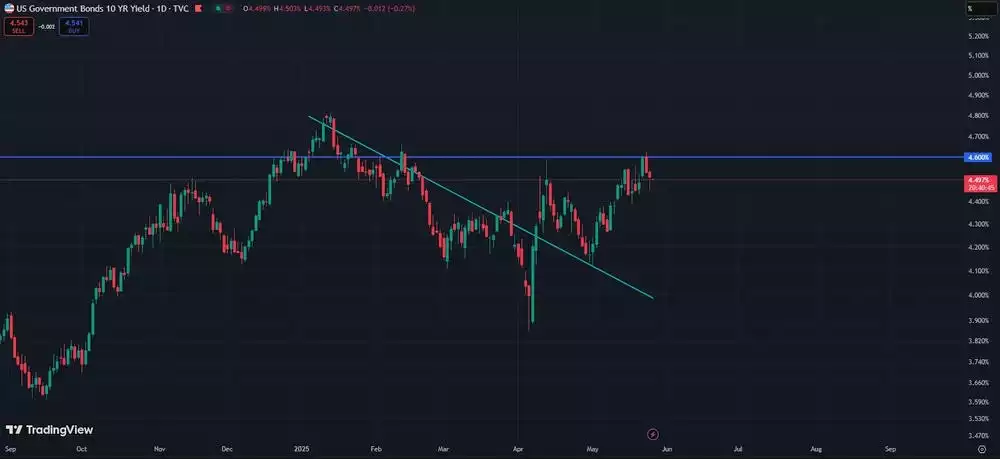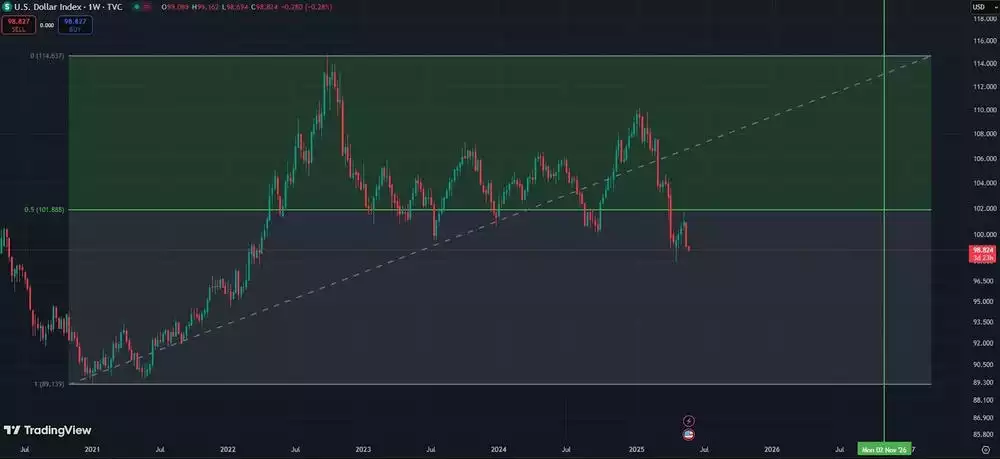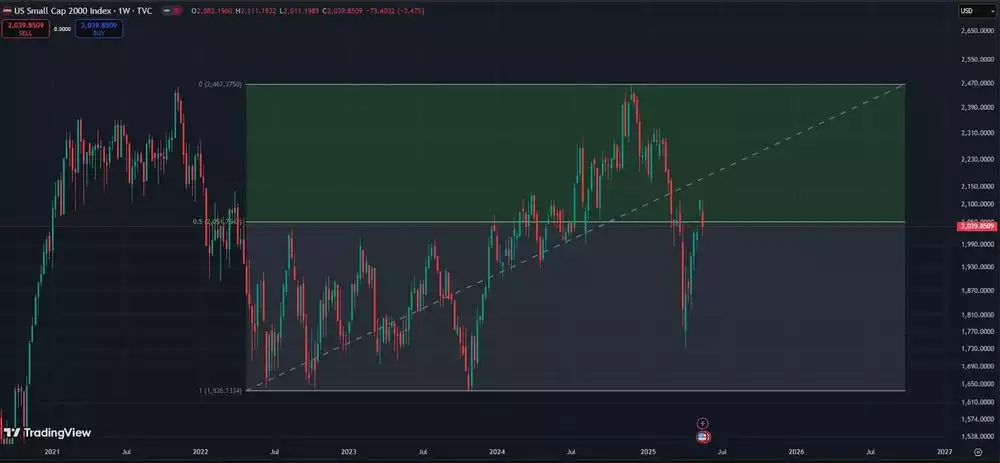Stock Markets at Critical Inflection Point
News
|
Posted 28/05/2025
|
1098
With a strong recovery from the recent panic sell-off amid global tariffs, major stock markets currently sit at a critical inflection point. With the recent upward price action, the S&P 500 is either putting in a macro lower high (with this recovery being a complacency bounce) or is facing the last stage of resistance before shooting off into new highs. The upcoming weeks will determine whether major stock markets fall into a macro bear market, or continue with the current macro bull market, intact.
While the room seems split on which one is most likely, all eyes are on the US bond market to help dictate the path forward. Meanwhile, investors are derisking their portfolios at this inflection point, until the path forward becomes clear.
The US 10-Year Bond Yields
Global financial markets felt a strain on liquidity, and borrowing capacity this April due to a spike in the US 10-year bond yields to 4.6% amid a sell-off in the US bond market.
This recorded a technical breakout from the downtrend in yields over Q1 (light blue trendline).

Having perfectly retested the downward-sloping resistance, the 10-year yield continued climbing towards 4.6%. Consecutive daily closes above 4.6% would confirm this technical breakout and shift the odds towards an uptrend in bond yields, and a downtrend in bond collaterals, putting continued strain on financial markets. While we have not yet recorded a daily close above 4.6% to confirm this breakout, the markets are currently at a major inflection point.
While falling yields would bolster global liquidity and favour the odds of fresh highs in the S&P 500, leaving the macro bull run intact – there is an argument to be made that rising yields would spur on US Federal Reserve intervention – due to the $9T of US government debt scheduled for refinance this year (which would be more effectively done at lower rates).
Fed intervention amid rising yields would result in short-term volatility which leads to longer-term liquidity injection – which would be beneficial for more financial markets long term. However, whether the Fed comes to the table or not, amid rising yields, is uncertain, as intervention would certainly be inflationary.
S&P 500
Since the panicked tariff sell-off, the S&P recovery has been incredibly strong - forming a V-shaped recovery, with a strong bounce off the 50% level of the macro range. However, this isn’t the time for complacency. If the S&P were to put in a macro lower high, this is where it would form - and rollover. While we have seen a minor pullback - we would want to see this market break to new all-time highs in June - to confirm the recovery - and validate the bull run being intact.
If, in the upcoming weeks, we see a failed attempt to break to new highs, and instead a clear downtrend forms on the weekly timeframe, we have a clear warning that this “recovery” was simply a complacency bounce.

DXY
The DXY has shown a rejection from its own macro 50% level, showing major technical weaknesses on the macro scale.

While in the upcoming weeks, we could likely see another short-term rally in the DXY, the current technical set-up is of a longer-term downtrend. A breakdown in the DXY would act as a macro tailwind for most financial markets.
Russell 2000
While markets are recovering, we can measure risk appetite, via the Russell 2000 small-cap index. When liquidity and leverage are abundant in the global financial system, investors move further along the risk curve and become increasingly speculative in their investments in such environments small market cap companies perform well, and the Russell 2000 puts in a sustained bull run.
Currently, we can see that unlike the S&P (which bounced off its own macro 50% level) the Russell 2000 broke below its macro 50% level - technically invalidating its macro bullish structure. While the bounce for the S&P has almost brought it back to all-time high prices - the Russell 2000 is struggling to recover and hold this 50% level.

This reflects a significant lack of risk appetite among investors who are likely still waiting for the resolution to the global tariff wars. Holding consecutive weekly closes above this 50% level is an early signal that risk appetite is re-entering markets. This will likely not happen until the S&P is at fresh highs and rallying - and not happen at all, if the S&P doesn’t make fresh highs.
The DXY falling off would help the S&P break to new highs, and the Russell 2000 establish a bullish trend with risk re-entering markets.
However, as we can see, all these markets are currently at a major inflection point. With one path leading to new highs, a risk-on rally, and a weakening dollar, and the other to a risk-off phase, a stronger dollar and potentially a prolonged bear market, for stocks.
All eyes are on the US bond markets as a fall in the US10Y yields will give the US Federal Reserve enough room to cut interest rates, guiding the DXY lower and significantly boosting global liquidity and leverage in a low-interest rate environment.
For assets like gold and silver, while they benefit from a falling DXY and increased leverage, they will also act as the assets of choice during the recovery phase of a bear market. With gold being a flight to safety asset, and silver benefiting from speculation in the precious metals markets (which occurs due to gold’s outperformance while most other markets struggle to recover).
While stock and land investors struggle to navigate the final phase of this macrocycle, precious metals investors continue building long-term positions in investment vehicles that allow them to effectively navigate both, this phase and the next with ease, security and capital growth.